| Site Stats: |
|
10180 Stats in 31 Categories |
| Search Stats: | |
|
| Latest Youtube Video: |
| Social Media: |
| Other Pages within RPGGamer.org: | |||
| Section of Site: Equipment D6 | Belongs to Faction: HALO | Subtype: UNSC/Human Armor | Era: | Canon: Crossover |

United Nations Space Command MJOLNIR ArmorModel:
MJOLNIR Armour Mark IV, V,
and VI
Armoured
Powered Suit:
HUD system for
UNSC weapon systems (No Penalties for using UNSC HUD
Weapons) Built-in
Commlink: Magnetic Weapon Holder Strips: Allows for fast transition between designated primary and secondary weapons. Shields (Mk. V, and Mk. VI only): Shield: 5D (Mk. V) Shield: 6D (Mk. VI) Protects against: Concussion, Sonic Automatic Biofoam Injectors (Mk. VI only) : +3 to First Aid (Self Only) Faster Healing Rates Magnetic boots (Mk. IV, Mk. V, and Mk. VI):
Description: These allow the user
to walk normally in zero gravity, and to grip onto the hull of
starships and other space objects. Description: The MJOLNIR (Pronunciation: ˈmjɔlˌnɪɹ 'my-all-'nhr) Powered Assault Armor is a technologically advanced combat exoskeleton system designed to vastly improve strength, speed, agility, reflexes, intelligence and protection of a Spartan-II supersoldier. Created parallel to the SPARTAN-II Program, the MJOLNIR Armor is currently the most advanced piece of tactical military hardware in human hands. Each suit alone costs as much as a small starship. The brainchild of Dr. Catherine E. Halsey, MJOLNIR is Halsey's attempt to create a powered exoskeleton capable of taking full advantage of the physical capabilities of a SPARTAN-II. The battlesuit is constructed in overlapping layers. It is a sealed system, capable of extravehicular activity or operations in toxic atmosphere. It is hardened against EMPs and radiation, and has filters that are completely effective at removing toxins and bacteria from local atmosphere. The armor's shell is composed of a multilayer alloy of remarkable strength and has been augmented with a refractive coating capable of dispersing a limited amount of Covenant energy weapons. The suit contains a gel-filled layer underneath a thick black armored bodysuit. The gel layer regulates temperature and can reactively change its density. The inner skinsuit is made of a moisture-absorbing synthetic material linked to an environment control computer and the occupant's UNSC-issue neural interface. Each human being has a molecular fiber network called the nervous system within their brain. An upgrade to the standard Neural Interface is issued to all high ranking officers; another modified version of the neural lace is issued to all SPARTAN-IIs in the UNSC. This network translates electrochemical signals to digital code and routes them through an interface connection at the rear of the skull. Through this interface, the user's thoughts command the armor's movement and weapons; and input from the on board sensors comes directly to the user's mind. The synthesis of machine and mind is so fast that it is almost impossible to chart reaction time. Sandwiched between the external armor and the internal padding is the most devastating weapon the suit carries: a layer of reactive metal liquid crystal. Woven by molecular tools into a superdense optical computer memory, this revolutionary crystalline layer forms a network, capable of supporting the kinds of artificial intelligence usually reserved for starships — a piggyback system. An A.I.'s personality and processing matrices can be carried by the armor and delivered to the suit via onboard storage in a crystal data chip no larger than a personal credit card. Such technology did not exist when work began on the Mark I prototypes. At the same time it is amorphous, yet amplifies force, doubling lifting capability and increasing reaction time by a factor of five. Unfortunately the system is so reactive that normal human beings cannot use the suit without injuring themselves. Only humans who have carbide ceramic ossification, a skeletal augmentation, such as a SPARTAN-II, can safely wear the suit. The suit also possesses other features that enhance its wearer's abilities. It has numerous clips, belts, and magnetic holsters for the attachment of additional weapons and ammunition; an advanced Heads-Up-Display(HUD) linked to sensors in the gloves detects the type of weapon and devices held, and to project shield strength, ammunition count, a targeting reticule, waypoints, a radio uplink for communication, health monitoring and restoration system, regenerative food materials and other helpful data. In its final phase the MJOLNIR battlesuit weighs half a ton, or 1000 Lbs and when in use, is a fully neural-linked system. With an on board A.I using the human mind for parallel processing, the SPARTAN-II/MJOLNIR combination is designed to be the most devastating intelligence tool ever created. The armor line is named for the mythical weapon Mjölnir, the hammer of Thor, the Norse god of lightning, thunder, wind, and rain. The origin of the word "Mjölnir" is unknown. The Icelandic verbs mölva (to crush) and mala (to grind) have been suggested as possible translations. Another theory suggests that MJOLNIR might be related to the Russian word молния (molniya) and the Welsh word melt (both words being translated to the term as "lightning"). This second theory parallels with the idea that Thor, being a son of the Chief God, Odin, and the God of Thunder himself, might have used lightning as his weapon. Variations: MJOLNIR Mark IV
Although the earlier attempts at developing high-powered armor produced designs that were impractical for battlefield deployment, Dr. Halsey's MJOLNIR Project would soon change that. The Mark IV was a radical redesign of the suit, taking advantage of many technological innovations. Developed and tested at the Damascus Testing Facility on Chi Ceti IV, this battle suit was the first to feature full integration with the user's body. The suit plugged directly into the user's neural network through a standard issue Neural Interface. The suit's many functions utilized the user's thoughts for commands, reducing reaction times by a factor of five, greatly speeding up the user's movements and reflexes. Its normal color is olive green, but it can be equipped with photo-reactive panels, offering camoflauge to the wearer. This was also the first design to successfully utilize the reactive metal liquid crystal layer as a means of enhancing locomotion. It enhanced the speed and power of the wearer, a sharp contrast to previous versions, which required powered motors to allow the user's mobility. Because of this advancement, the design more closely resembled an actual suit of armor, as opposed to a powered exoskeleton; the user moved the suit, and in return the suit moved the user. This allowed for an incredibly compact design when compared to the previous incarnations. The success of this version was also dependent upon the parallel development of the Spartan-II program, which produced troops with the physical capabilities required to drive the system. Previous attempts to equip marines with the armour had resulted in catasrophe, as the test subjects were either killed, or permanently disabled for life. The Mark IV armor contained an integrated computer system which continuously monitors weapons, biological functions, and motion through intelligent motion-sensing radar. The suit was airtight, hardened against vacuum, and featured air-filtration systems as well as a built-in oxygen re-breather system that could last for up to 90 minutes. The suit's helmet also featured a standard UNSC mounted flashlight with its own separate power supply. Concealed side compartments in the upper thigh plates allowed the user to holster a sidearm. In combat situations with the Covenant the Mark IV could only take a few shots from Covenant Plasma Weapons before failing, even with a refractive coat to help disperse energy attacks. The Mark IV still could not overcome the major problem of keeping its user safe. The suit also had a number of other features, including recoil-compensating actuators, hydrostatic gel to regulate and monitor temperature and dramatically reduce impact force, binoculars, infrared vision, UV-vision, night vision and biofoam injectors. However, the biofoam injectors and medical care systems of the Mark IV had to be provided with a direct supply of biofoam, medicines, and stimulants from a standard Marine first aid kit when the user was injured, as the suit would not hold or generate a supply of medicines and biofoam, unlike the Mark VI. Another feature introduced, and applied to later versions, was magnetic soles on the suit's boots that allowed the wearer to stand on a high moving metal object, such as a ship's hull. The suit however did not accommodate magnetic plating to hold weapons and equipment. Also, the suit was able to automatically pressurize to compensate for the addition of or lack of gravity as a life-saving mechanism. It was this function that Rebels took advantage of via the use of anti gravity plates. The Mark IV Assault armor was fielded from November 27th, 2525 to August 29th, 2552, when it was replaced by MJOLNIR Mark V armor. MJOLNIR Mark V
The Mark V was powered by a larger fusion pack than the Mark IV. This was necessary due to the fact that the Mark V had an integrated dynamic, self-recharging, energy shielding system, built using captured Covenant technology -- specifically, Jackal Point Defense Gauntlets, which repel mass objects and energy bursts. While impacts on the shield place a substantial drain on the system's power supply, the system's energy regenerates quickly once the user is no longer under fire. However, the process of adapting the shield to cover the entire body weakened the energy field, making the Mark V's shield system vulnerable to ballistic fire, unlike Jackal shields, which are nearly impervious to ballistic weaponry. This was unfortunate, as Flood Combat Forms frequently use UNSC weaponry. The armor was made up of layers of dense material, and the outside was treated with an energy-absorbing coating that could ablate when under intense fire. In addition to energy shields, the Mark V featured a weave of memory-processor super-conducting material -- the same material that is used in an AI's core -- beneath its armor. This, along with an upgrade to the standard-issue neural implant, allowed an AI to inhabit the suit of armor and interface with the mind of its user, with the suit housing the AI just as well as an entire ship would. An AI can greatly enhance the interface between the suit and the wearer and boost real-time data processing power, assisting the wearer by monitoring communication channels, computer relays, and friendly combat updates. The AI could translate thought into motion quickly, thus boosting the reaction time. Without the armor, a SPARTAN's reaction time is charted at twenty milliseconds; the AI boost could render it almost instantaneous. The AI can also use the human's brain as an additional processor, storing data and performing calculations with it. The MJOLNIR Mark V, along with its successor, the Mark VI, is equipped with magnetic pads placed throughout the suit, on the belt, thighs, and back. This allows the user of the MJOLNIR suit to attach weapons, grenades, tank mines, or even a HAVOK Tactical Nuclear Weapon, if the situation demands the use of it. Extra components were developed for the Mark V, to which the remnants of the Spartan II Red Team on Reach added to their armor. UNSC Mark VI
The armor was also capable of healing minor to moderate injuries over a course of time, due to a regenerative on board supply of Biofoam, which was automatically injected into the wearer's body, filling and sealing wounds, but causing extreme pain. This new capability eliminated the need to manually apply a medkit or seek a field medic in order to tend to injuries. The Biofoam effectively treats all but the most critical wounds, and its use was capable of stabilizing the user and allowing him to perform his duties even while injured until such a time as more extensive medical attention was possible. It is also likely that the suit was capable of automatically increasing the pressure level of its hydrostatic gel as the user was falling. The MJOLNIR is an adaptable suit of armor with many variations and modifications available, optimizing it for certain functions, and situations and is backwards compatible with older MJOLNIR variants that have received upgrades for compatibility. Mark VI - CQB
The MJOLNIR/C Variant was developed and tested at UNSC facilities in Essen, Deutschland, and Songnam, Hanguk, respectively, integrating feedback gathered from the Jericho VII Theater. The intent of the MJOLNIR Mark VI Powered Assault Armor/C variant was to improve survivability in close combat, specifically by looking at alternate methods of K dispersal and improving joint mobility. Variant Quirks: +1D
Melee Combat, Parry, Dodge, and
Brawling MJOLNIR Mark VI - V
The Mark VI MJOLNIR Powered Assault Armor/V variant, more commonly known as Extra Vehicular Activity Armor and abbreviated as EVA Armor, is a type of United Nations Space Command body armor. The EVA armor is a variant of the standard Mark VI MJOLNIR powered assault armor; specialized to improve survivability of SPARTAN-II's when in vacuum. The Booster Frames featured in Halo Legends are EVA specific purpose machines cobbled together for a very black ops mission and are purpose built to do a single task. The MJOLNIR/V variant was developed and tested at a UNSC Low/Zero Gravity Testing Facility facility in Lister, Aigburth on Ganymede, integrating feedback gathered from the Summa Deep Space Incident. The Mjolnir/V variant focuses on increasing exo-atmospheric endurance and improving mobility in zero gravity without the original use of back thrusters. Variant Quirks: +1D Dex bonus to Dexterity and related skills, in 0 G environment (regular
Dex bonus in non 0 G environments) Mark VI - EOD
The MJOLNIR/EOD variant was created at the UNSC Damascus Materials Testing Facility on Chi Ceti 4. The helmet was designed to channel the pressure wave of a nearby detonation around the user's head, significantly reducing the likelihood of decapitation in the event of an explosion. The MJOLNIR/EOD variant's pauldrons and chest plate were designed specifically to reduce the number of grabbing edges on the armor, decreasing the likelihood of dismemberment, and protecting Spartans during operations involving the handling of explosive ordnance (e.g., clearing/planting land mines, demolishing enemy structures/material and, or planting/defusing bombs). The helmet is mostly squared off with two separate eyepieces, rather than a visor. They are more akin to a pair of goggles unlike the other MJOLNIR armor variants that are visor-adorned. In actual combat, this would highly increase protection to the face but also reduce the field of vision considerably. The helmet also has a single plate over the nose and mouth and a pair of rectangular objects along each cheek, assumed to be jowls protectors or lengthy re-breathers. Variant Quirks: +1D Technical +2 Additional Demolitions (for 1D+2 Bonus) Mark VI - Hayabusa Variant
The Hayabusa Armor's advanced materials decreased its weighty bulk by one-third, and is aesthetically Japanese in design. The Armor was designed after Ancient Samurai and Ninja designs. It includes spiked shoulder pauldrons (correctly referred to as s'ode). The purpose of the Japanese aesthetics was to instill fear in enemy soldiers while compensating for the armor's lack of defensive strength by angling the pieces to reduce ballistics penetration and providing a sleek, aerodynamic figure. The Hayabusa Armor's helmet was designed with a defensive and ultraviolet protective visor. It, like on all UNSC helmets, is the weakest point in the helmetpiece itself. The small visor is more difficult to accurately penetrate thus defending the wearer. The small visor also provides for better camouflage. Although initially developed as its own powered armor system, it seems that the Hayabusa armor has been modified and adapted to be compatible with the next-generation MJOLNIR armor system. This allowed it to be available for use by the SPARTAN-II supersoldiers although its field deployment appeared to be extremely limited. Variant Quirks: +1 Bonus to Defense when struck in the head by Physical and Energy Weapons +1 to Intimidation MJOLNIRMark V (m)
The MJOLNIR V(m) variant was manufactured in the Misriah Armory Facility on Mars in 2543, a year after the Mark V entered production in 2542. Like the Mark V, it has been upgraded to be compatible with all current generation MJOLNIR variants. Wearing the helmet will also add a small antenna and dial to the right shoulder. Variant Quirks: +1D to Perception +1D to Command +1D to Sensors MJOLNIR Mark VI R
The Mark VI MJOLNIR Powered Assault Armor/R variant, colloquially known as Recon Armor or Recon, is a type of United Nations Space Command body armor. The Recon armor was developed parallel to the Scout Armor in the B5D Ordnance Testing Facility in Swanbourne, Perth, (Western) Australia. The main purpose of the Recon Armor was to create armor with stealth capabilities and with little or no loss of endurance, specifically by reducing its IR signature, reflective surfaces, and Cherenkov radiation emission. Variant Quirks: +2D to Stealth and Sneak MJOLNIR Mark VI S
The Scout and Recon projects were run as parallel projects intended to develop a single variant of the MJOLNIR Powered Assault Armor with stealth capabilities and no impact on endurance; however, the SCOUT variant relies heavily on highly advanced materials. It was tested in ONI's Ordnance Testing Facility B5D at Swanbourne, Perth, in (Western) Australia. It features a cap-like protrusion, along its rim and a beak-like protrusion under the chin. It is usually best to use this armor for sniping because its thin, slit-shaped visor keeps it less visible than other helmets. Its general shape could be compared to a full face helmet usually worn when participating in motor sports. Variant Quirks: +1D to Stealth and Sneak +1 to Scoped Weapons Skills MJOLNIR Mark VI(A)
The Mark VI(A) armor was the first of many "privatized" variants, manufactured by private industrial firms. With the fall of the Outer Colonies, the UNSC called upon private industries to manufacture classified war material. The helmet has one small visor that resembles a pair of sunglasses, rather than the normal and typical MJOLNIR Mark VI visor. The mouth-guard appears longer and thicker with an added "hole" in the center of the mouthpiece, it seems that it is actually part of the helmet rather then an add-on otherwise it wouldn't be classified as a separate variant. The top of the helmet, which has been mistaken for the "stealth" helmet, is much more rounded as well. The mouth guard rounds, shapes, and cups into a circular black piece in front of the mouth that forms the aforementioned "hole". Variant Quirks: +1D to Stamina +1D to Survival |
Comments made about this Article!
| |||
| |||
| |||
| |||
First Page
| Add your comment here! | |
Page designed in Notepad, Logo`s done in Personal Paint on the Commodore Amiga
All text and stats by Bob the Dinosaur, HTML and logos done by FreddyB
Images stolen from an unknown website at some remote time in the past.
Any complaints, writs for copyright abuse, etc should be addressed to the Webmaster FreddyB.







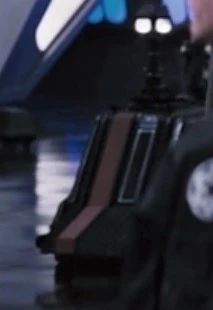



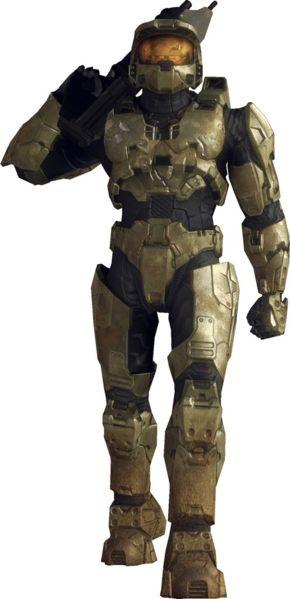
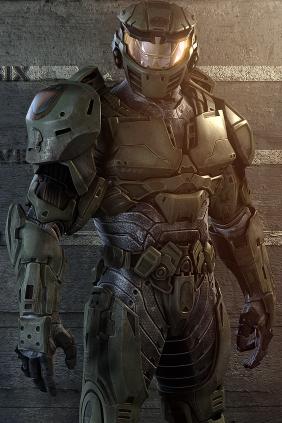
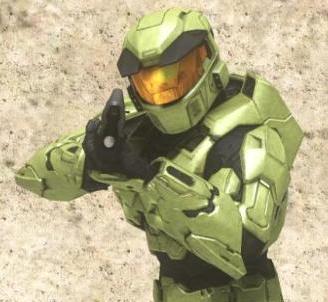 The
newer Mark V replaced the Mark IV Assault Armor the day prior to the
Covenant
The
newer Mark V replaced the Mark IV Assault Armor the day prior to the
Covenant 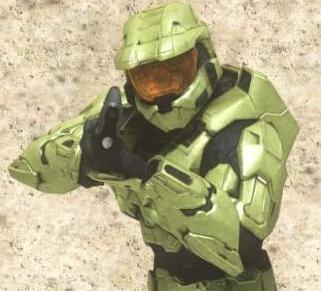 The
Mark VI battle armor addressed some of the weaknesses of the earlier
models. The energy shielding system recharged significantly faster
and was notably stronger. There were a number of lights implemented
into the armor plating to help indicate the current status of the
energy shield, which also easily revails the user to the enemy, and
his shield strength. The lights would flicker rapidly when the
shields were down and would glow brightly for the duration of the
recharge time. The armor plating, while less bulky, was more dense,
therefore offering much more, protection than previous models. The
suit was more streamlined than the Mark V, eliminating a number of
grapple points that an enemy could use in close-quarters battle. This
version of the armor could track the status of two active weapons at
the same time. It included a visual magnification system, like the
previous two models.
The
Mark VI battle armor addressed some of the weaknesses of the earlier
models. The energy shielding system recharged significantly faster
and was notably stronger. There were a number of lights implemented
into the armor plating to help indicate the current status of the
energy shield, which also easily revails the user to the enemy, and
his shield strength. The lights would flicker rapidly when the
shields were down and would glow brightly for the duration of the
recharge time. The armor plating, while less bulky, was more dense,
therefore offering much more, protection than previous models. The
suit was more streamlined than the Mark V, eliminating a number of
grapple points that an enemy could use in close-quarters battle. This
version of the armor could track the status of two active weapons at
the same time. It included a visual magnification system, like the
previous two models. The
Mark
VI MJOLNIR Powered Assault Armor/C variant,
more commonly known as Close
Quarters Battle Armor,
and abbreviated as CQB
Armor,
is a type of
The
Mark
VI MJOLNIR Powered Assault Armor/C variant,
more commonly known as Close
Quarters Battle Armor,
and abbreviated as CQB
Armor,
is a type of 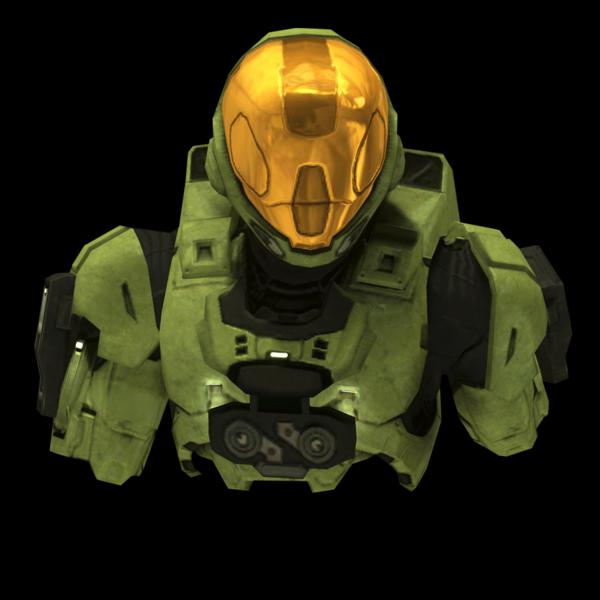
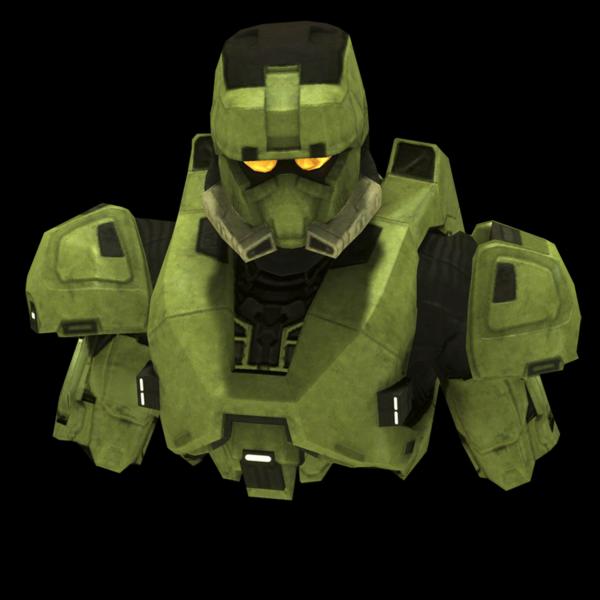
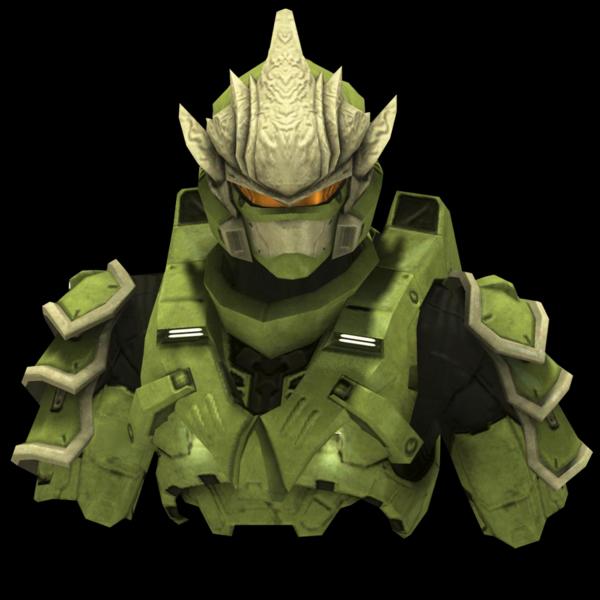 While
HAYABUSA had different goals than its rival project, MJOLNIR, both
programs resulted in powerful battle armor that boasted
While
HAYABUSA had different goals than its rival project, MJOLNIR, both
programs resulted in powerful battle armor that boasted  The
Mark
V(m) MJOLNIR Powered Assault Armor,
also known as the Security
Armor,
is a variation of the
The
Mark
V(m) MJOLNIR Powered Assault Armor,
also known as the Security
Armor,
is a variation of the 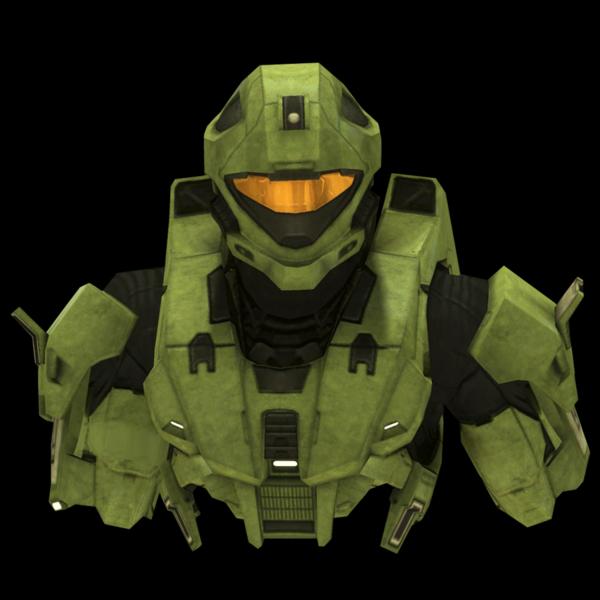
 The
Mark
VI MJOLNIR Powered Assault Armor/S variant,
more commonly known as Scout
Armor,
or simply Scout,
is a type of
The
Mark
VI MJOLNIR Powered Assault Armor/S variant,
more commonly known as Scout
Armor,
or simply Scout,
is a type of 